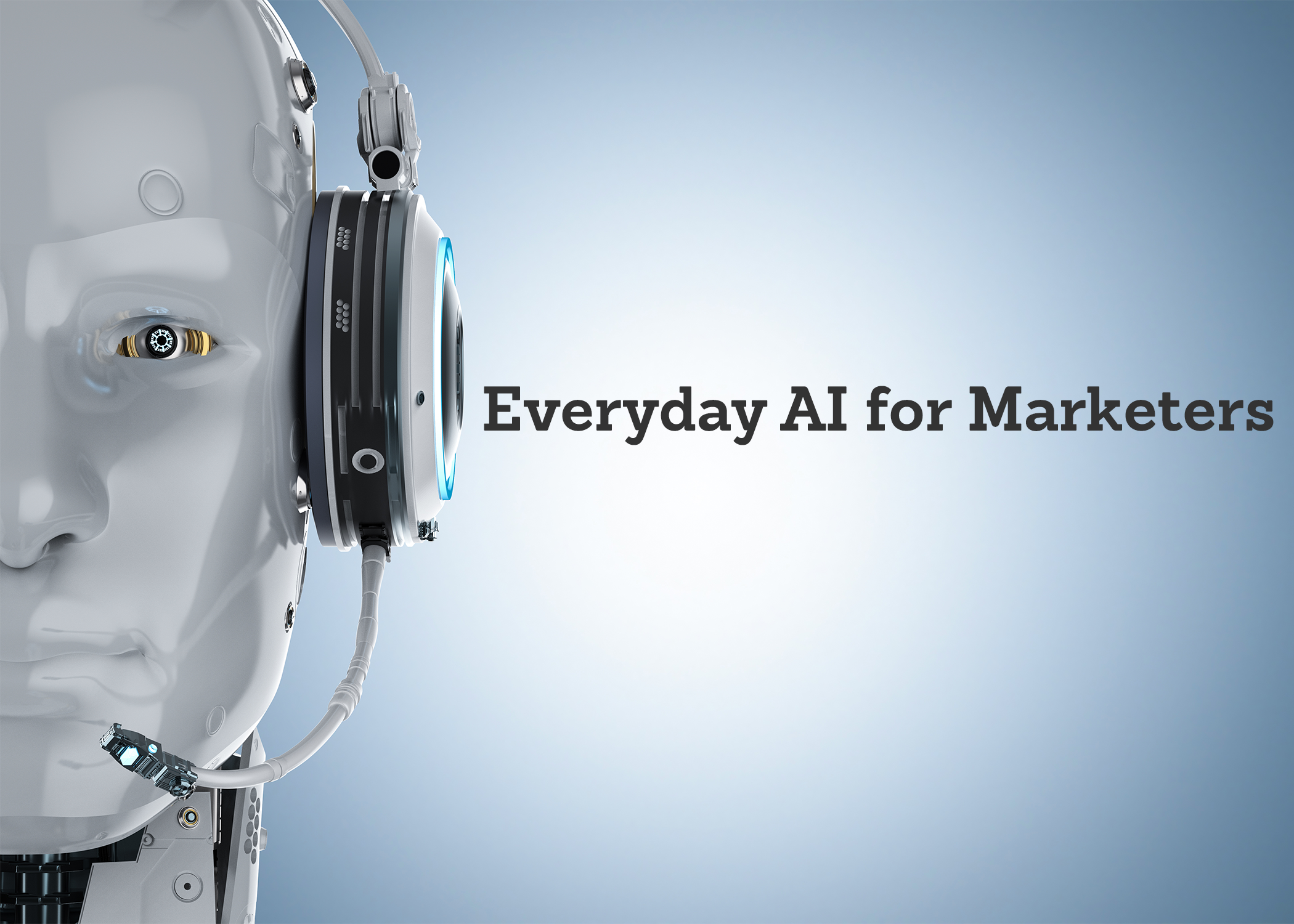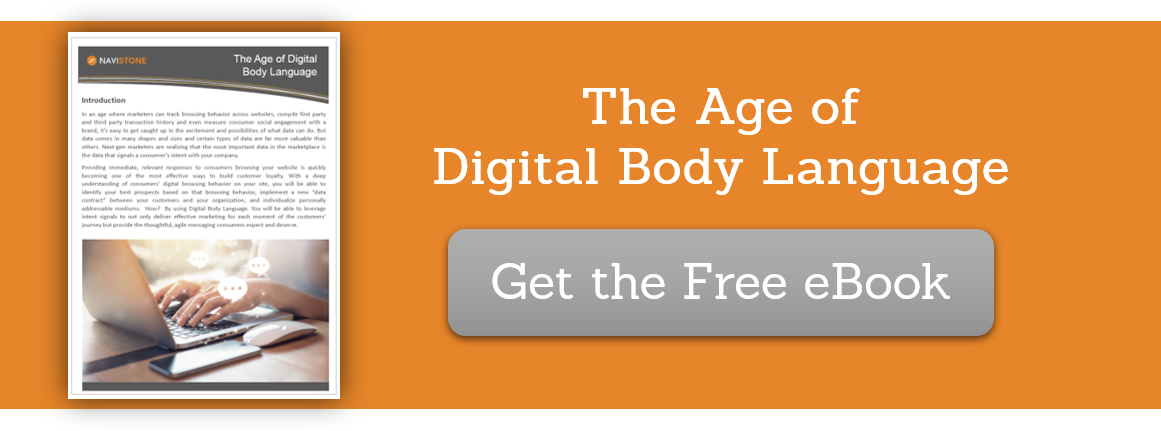
As part of our blog series on moving beyond the marketing buzz in 2019, we want to break down one of the most popular buzzwords currently being used, Artificial Intelligence, or commonly known to most as AI. What is it? Who is using it? How is it being used? And, last but certainly not least, WHY are marketers using it?
Everyday AI for Marketers
Artificial Intelligence (AI), is the theory and development of a computer system’s ability to perform tasks that normally require human intelligence, such as visual perception, speech recognition, decision-making, and translation between languages.
Contrary to what many may think, AI has, in fact, been around for a while. According to Life Science, the idea of inanimate objects coming to life as intelligent beings has actually been around for a long time. The ancient Greeks had myths about robots, and Chinese and Egyptian engineers built automation. The beginning of modern AI can be traced to classical philosophers’ attempts to describe human thinking as a symbolic system. But the field of AI wasn’t formally founded until 1956, at a conference at Dartmouth College, in Hanover, New Hampshire, where the term “artificial intelligence” was coined.
Fast forward to 2019 and AI is everywhere. The term has caused so much hype that many may think it’s “coming soon”, but in reality, it has arrived. It is in your pocket every day in the form of a friendly voice ready to answer your questions through your phone, it is sitting on your kitchen island in a little cylinder waiting to play songs and tell you jokes, and for some consumers who are bravely pioneering in innovation, it is driving you down the street in a self-driving vehicle. These are just some examples of the ways that technology combined with data is enhancing our everyday experiences. And, when you think of enhancing a consumer’s everyday experience, shouldn’t marketers be at the forefront of this?
As marketers evolve the customer experience, AI becomes more and more influential. It gives marketers access to efficient data processes that can effectively replace human action.
How are marketers using AI today?
While still in its infancy, AI will always be in a constant state of iteration and improvement. Afterall, that is the nature of Artificial Intelligence. True AI can improve on past iterations, getting smarter and more aware, allowing it to enhance its capabilities and its knowledge.
There is much debate on whether or not AI will have a negative impact on people by replacing the need for human interaction and work. However, the flip side of delegating some of the data-driven decision-making to machines is the time it allows marketers to focus on delivering insightful campaigns and addressing challenges.
According to a study conducted by Evergage, 33% of marketers surveyed use AI to deliver personalized web experiences. When asked about the benefits of AI-powered personalization, 63% of respondents mentioned increased conversion rates and 61% noted improved customer experiences.
Let’s look at how marketers are rolling out AI today.
A more personalized consumer experience.
By now we are all familiar with the value exchange that occurs between consumer data and a more relevant, personalized experience. Because of this symbiotic relationship, this valuable data feeds these programs and has become one of the most beneficial outcomes from the use of AI in marketing today. By using intelligent algorithms to analyze hundreds of consumer data points, programs which run on an AI platform can now help in delivering an offer that is most relevant to that consumer’s interest. This form of AI is not limited to digital channels only. Platforms exist today which bridge the online intent of consumers directly to their home mailbox.
One creative example of how AI, powered by consumer data, is being used to personalize a customer experience is by 1-800-Flowers.com. They are using AI to help support gift giving. “GWYN" (Gifts When You Need), is an AI-powered gift concierge that works like a personal assistant. Through a series of questions, it gets smarter and predicts the type of gift that might be most appropriate for somebody.
Additionally, North Face uses AI to helps customers refine product selections based on answers to a series of questions. If a customer says they like to hike in the winter, the program will ask questions about their location and preferences and recommend the appropriate options to view.
Better customer interaction.
While personalization takes care of giving the customer what they need when they need it, improving the customer interaction with your company and product is another way AI is boosting the impact marketing has on the bottom line. For example, many companies have turned to AI chatbots. These virtual assistants can help build stronger relationships with customers in an efficient and consistent manner.
With AI they can predict user behavior and optimize tactics like keywords and interactions, making the experience more unique to each consumer. In a “now” era, chatbots have been an ideal way to deliver a quick and sufficient response to consumer questions and issues. According to a report (Humanity in the Machine) from media and marketing services company Mindshare, 63 percent of people would consider messaging an online chatbot to communicate with a business or brand. Additionally, online chat and messaging apps are the preferred way for 29 percent of people to contact retailers when making a purchase decision, according to [24]7.
Audience segmentation and targeting.
Last, but certainly not least…AI is commonly being used by marketers for audience segmentation and targeting. As an advertiser, one of the first lessons you learn in the field is, “know your audience”. So, how has AI helped marketers understand an audience and target more accurately?
Take into account that the average e-commerce conversion rate is 2%. This means 98% of your site visitors are coming to your website and not making a purchase. Therefore, it is absolutely critical to stay in front of your consumers and remain top of mind via retargeting. By now we are all familiar with how retargeting works. This ability to leverage data points based on browsing history and actions and then deliver dynamic content based on the intent of the visitor allows brands to reconnect with customers and prospects. And, if we’re talking about maximizing the retargeting effort for driving conversions, this doesn’t necessarily have to take place online. Although it may seem contrary to the idea of AI and technology, brands are seeing significantly higher results (5% response rates) when they combine data and technology for audience segmenting and targeting via direct mail. For more results on how this works, check out the offline retargeting case studies here.
The conversation around AI and marketing is just beginning. These examples just scratch the surface of how AI is improving the process for marketers and the experience for consumers. Looking ahead, marketers should feel inspired by the untapped territory in front of us. Perhaps there will be a day when we can pull our heads out of formulating spreadsheets and pie charts and execute more strategically while putting our creative skills to use!


Lookalike Audiences Enhance customer acquisition by identifying high-potential prospects, boosting response rates, and lowering advertising costs.
Retargeting Postcards Double the performance of your direct mail retargeting.
Amplify Recognize unknown visitors who are actually customers. Add 20-40% to your ESP/CRM campaigns.
IQ Mail Retain customers with personalized, timely messages for those opting out of digital channels.






Comments